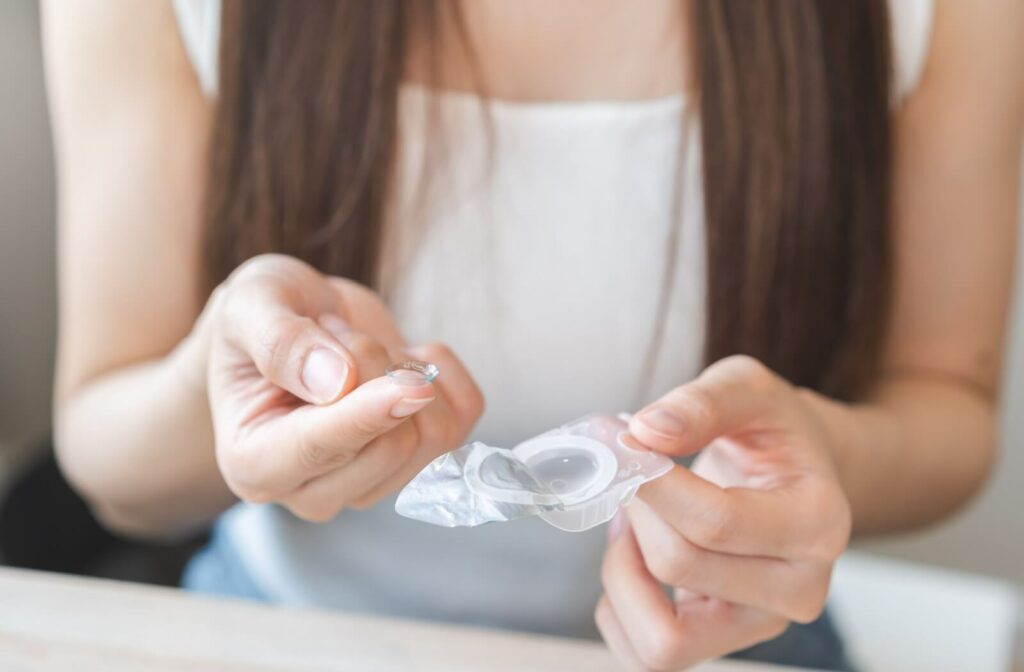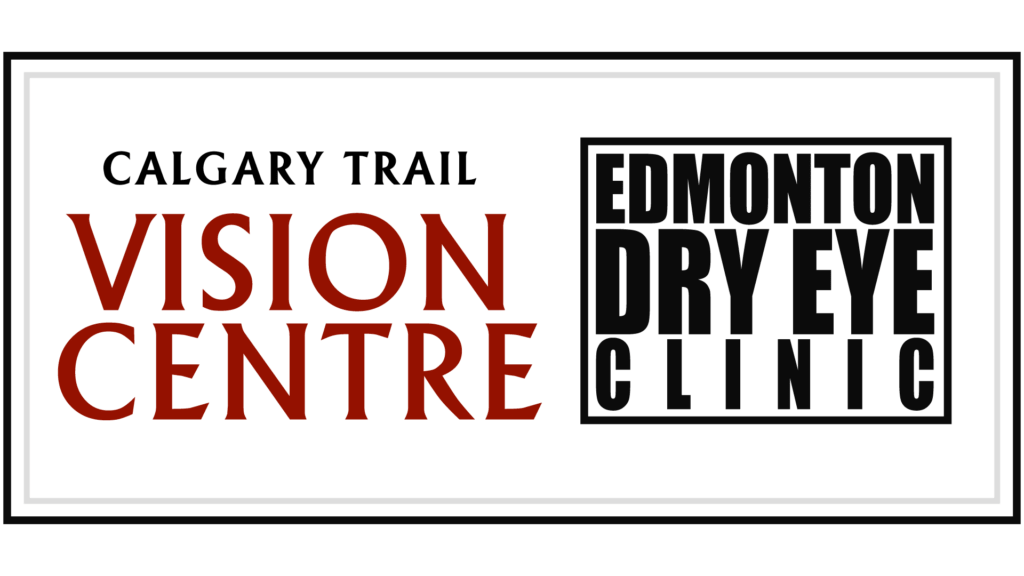Many contact lens wearers experience dry eyes or a feeling like sandpaper in their eyes after a long day of wearing contacts. Understanding why this happens—and how to manage it—can significantly improve your comfort and overall eye health.
Contacts can increase your risk of dry eye by changing the stability of your tear film and increasing friction in the eye. If you wear contact lenses, your eye doctor can perform a contact lens exam to determine the right lens type to suit your vision and eye health needs.
What Is Dry Eye?
Dry eye occurs when your tears can’t provide adequate lubrication for your eyes. This can occur for various reasons, including insufficient tear production or poor-quality tears that don’t have the proper chemical composition.
The tear film has three layers that help provide lubrication, protect the eye from foreign material, and prevent your tears from evaporating:
- The water layer
- The mucous layer
- The oil layer
If these layers are all working properly, then generally your eyes won’t be dry. However, several factors can contribute to decreased tears and an unstable tear film:
- Environmental conditions like wind, smoke, or dry air
- Lifestyle choices, such as prolonged screen time and not blinking enough
- Certain medications that cause dry eyes as a side effect
- Underlying health conditions like diabetes or autoimmune diseases
Common symptoms of dry eye can include:
- A stinging or burning sensation
- Scratchiness
- Redness
- A gritty feeling
- Watery eyes
Can Contacts Cause Dry Eyes?
Contact lenses can cause and often exacerbate dry eye symptoms. This is commonly known as contact lens-induced dry eye. When placed in the eye, contact lenses disrupt the tear film and upset the balance of the ocular surface, increasing the risk of dry eye.
Interaction of contact lenses in the eye causes dry eye in the following ways:
- Increased tear evaporation
- Reduced tear thickness and volume
- Delayed spreading of the lipid layer
- Increased friction between the lens and eye surface
Contact lenses can also absorb moisture from the eyes, reducing the level of natural lubrication. If you already suffer from dry eyes, this can worsen dry eye symptoms.
Different types of contact lenses have varying impacts on eye moisture. Soft lenses, made from hydrogel, are generally more comfortable, but can still absorb tears. Silicone hydrogel lenses allow more oxygen to reach the cornea, but can dry out quickly, even though they have a higher water content. Rigid gas-permeable lenses are hard lenses and don’t absorb moisture, but can sometimes feel more comfortable.
Managing Dry Eyes for Contact Lens Wearers

Managing dry eyes while wearing contacts involves a combination of good habits and specialized products. One of the simplest ways to reduce dryness is to use lubricating eye drops specifically designed for contact lens wearers. These drops can help maintain moisture levels and reduce irritation.
Specialty contact lenses, such as scleral lenses, can benefit individuals with dry eyes. These lenses have a larger diameter than traditional contacts, creating a dome-like shape that rests on the white part of the eye, called the sclera. This moisture reservoir provides moisture to the cornea and reduces irritation and discomfort caused by dryness.
Proper contact lens care is also crucial. Always follow your eye doctor’s instructions regarding cleaning and storage. Use a no-rub cleaning solution, but rinse your contact lenses thoroughly to avoid any residue that can irritate the eyes. Additionally, consider using daily disposable lenses to minimize the risk of buildup and contamination.
Pay attention to your environment and habits. Avoiding smoke, using a humidifier in dry rooms, and taking regular breaks from screen time can make a significant difference. Remember to blink frequently, especially during screen time, to keep your eyes moist.
The Importance of Regular & Contact Lens Exams
Regular eye exams are vital for maintaining eye health, especially if you wear contacts. However, you’ll still require regular contact lens exams to check your contact lens prescription, to make sure your contacts still provide comfort and fit for your vision and eye health needs, and to receive tailored advice for managing dry eyes.
Regular check-ups also allow your eye doctor to detect any early signs of eye conditions that could exacerbate dry eyes or be affected by dry eye or contact lenses. Don’t wait for discomfort to schedule an exam; proactive care is key to long-term eye health.
Contact Lenses for Clear, Comfortable Vision
Understanding the relationship between contact lenses and dry eyes is the first step toward maintaining comfortable, healthy vision. By staying informed about dry eye and contact lens-induced dry eye, and by adopting proactive measures, you can enjoy the freedom of contact lenses without the discomfort of dryness.
You don’t have to give up wearing contact lenses because of dry eyes. With improvements in contact lens technology, you can keep wearing them as an alternative to eyeglasses.
Schedule an appointment for an eye or contact lens exam today with Calgary Trail Vision Centre to determine the right contact lens for your needs for clearer, more comfortable vision.


